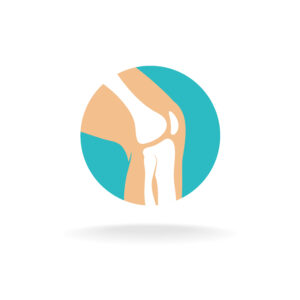 By: Jay Cao, U.S. Dept. of Agriculture, Human Nutrition Research Center
By: Jay Cao, U.S. Dept. of Agriculture, Human Nutrition Research Center
You probably know that women after menopause are more likely than men to lose bone and develop osteoporosis, a disease in which bones become porous and easy to break.
That’s because women after menopause produce less estrogen, a hormone that helps prevent bone loss.
In the United States, about 10 million people, 80 percent of them women, aged 50 or older have osteoporosis. There are about 1.5 million people who suffer an osteoporotic-related fracture each year. Osteoporosis is responsible for more than $17 billion in direct annual health care expenditures.
Build healthy bones early
Bone is a living tissue that is constantly built and broken down throughout a person’s lifetime. The speed of building and breaking down determines bone mass. Bone mass is like a bank account in which balance is determined by deposits and withdraws.
During the first two decades of women’s lives, bone formation outpaces breakdown, and bone grows in length and width. Women reach their peak bone mass, or maximum bone strength and density, before the age of 40 years. In general, women with higher peak bone mass achieved before menopause will be at lower risk for developing osteoporosis later in life.
Because almost half of the adult bone mass is acquired during the growth spurt before puberty, maximizing the peak bone mass in early life is crucial for the prevention of osteoporosis.
Although peak bone mass is strongly influenced by genetic factors that we cannot change, there are many other factors that we can modify to increase bone size and strength — such as nutrition, physical activity, and other lifestyle factors.
Calcium and vitamin D
Adequate calcium and vitamin D intakes are vital for normal bone development throughout womens’ lives. Calcium is the most abundant mineral in the human body. Vitamin D is essential for intestinal calcium absorption by the body.
Vitamin D can be synthesized by the skin after exposure to ultraviolet light in sunlight. The Food and Nutrition Board of the Institute of Medicine recommends adult women should take 1,200 milligrams of calcium a day and 400 IU vitamin D/day. Women older than age 70 years should take 600 IU vitamin D/day.
Fortified cereals and juices and dairy products like milk and yogurt are excellent sources of calcium. Good sources of vitamin D include fatty fish, salmon, or fortified orange juice and cereal.
Other dietary factors
Despite many years of research on the roles of calcium and vitamin D in bone health, we still haven’t been able to prevent osteoporosis. Now, we know many other dietary factors may have equal or more important roles affecting calcium absorption, bone formation and bone resorption as calcium and vitamin D.
For example, inadequate magnesium intake affects calcium metabolism, resulting decreased bone strength and volume. Iron may help bone formation. Zinc is also necessary to bone structure. People with low protein intake usually have low intestinal calcium absorption and low bone mass. Antioxidants in foods can reduce bone loss, increase bone formation, and improve bone quality.
And being obese is bad for your bones — the key to getting enough nutrients necessary for healthy bones is to eat balanced foods.
Physical activity
As with many other health disorders such as type 2 diabetes, hypertension and chronic heart disease, physical activity, especially weight-bearing activity, increases your bone mass and reduces your risk of osteoporosis. No matter how old you are, or whether you are male or female, weight-bearing activity increases bone density.
Women especially should engage in at least 30 minutes physical activity per day, as recommended by MyPyramid, a program sponsored by the U.S. Department of Agriculture. Among the many activities to consider are walking, jogging, running, stair-climbing, dancing, and swimming.
No matter what kind of physical activity you choose and how much physical activity you perform, as long as you are active physically, you are helping your bones.
You can visit the website at MyPyramid.gov for physical activity and dietary recommendations to improve your quality of life. These recommendations should also help you build healthy bones.
Comment from the blog author Nutrition Breakthroughs: Calcium, magnesium and vitamin D have many beneficial roles in the body. Calcium strengthens bones, improves heart and stomach health, calms our nerves and muscles, and helps with sleeplessness and insomnia.
Magnesium is a co-factor in bone health, it helps remedy migraines, and it also supports healthy blood pressure. Calcium Supplements should be balanced and contain twice as much calcium as magnesium.
Sleep Minerals II from Nutrition Breakthroughs is an effective sleep remedy for insomnia that contains absorbable forms of calcium and magnesium in a softgel, as well as Vitamin D and zinc.
Lyn K. of Los Angeles, CA. says: “Not only do I sleep much sounder with Sleep Minerals II, it seems to fill in a missing link in my health. I feel stabilized and I’m carried through my day with a stability from the sound rest. Also my heart and eyes feel healthier and stronger.”
For more information, visit the Sleep Minerals II page.
via ars.usda.gov


